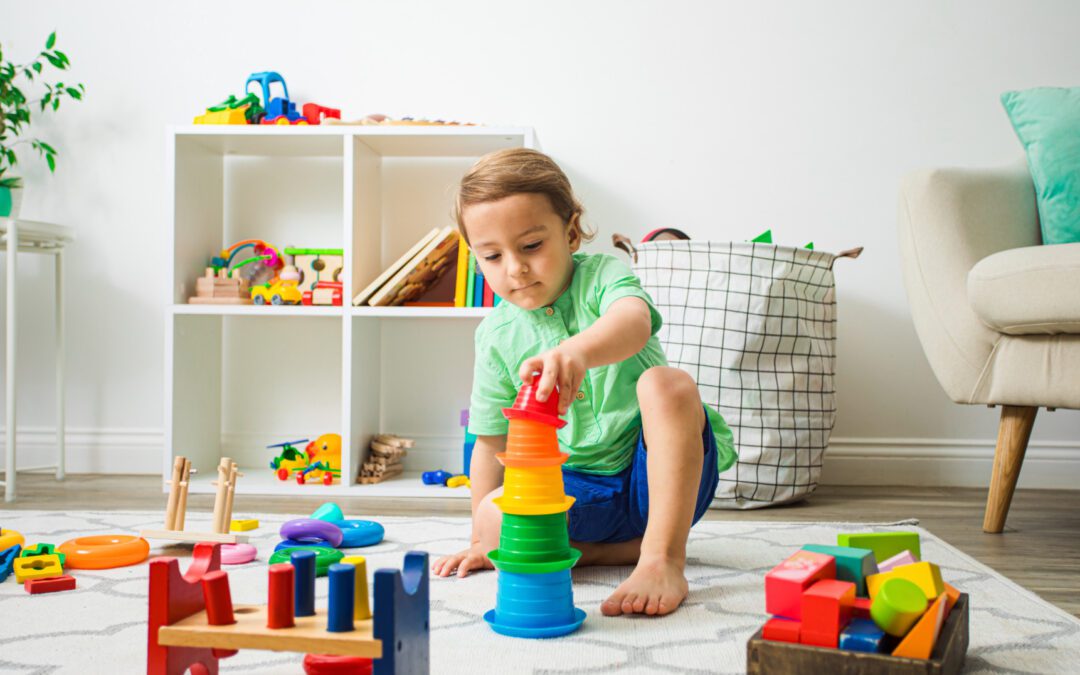Shuttling from soccer practice to dance classes to a STEM-based after-school program or summer camp helps children foster new interests and learn new skills. With so many options for enrichment, they are busier than ever outside of school.
While being busy and engaged with activities is an essential part of building strong minds and bodies, the rise of screen time means that even in their downtime, kids are rarely unoccupied. Several studies have found that unstructured play, or free play, helps children grow into well-adjusted adults, and that it is critical to developing socially, emotionally, and cognitively1.
What Is Unstructured Play?
Children play sports, instruments, and games, but those activities, while beneficial, have rules and impose limitations that unstructured play does not. Unstructured play, by contrast, is play that children direct themselves, that isn’t organized by adults, and that has no predetermined purpose or prescribed outcome2. It can be active, occur indoors or outdoors, involve peers or be solitary. Imagination and creativity are crucial aspects of unstructured play. Letting children take the lead without adult direction and encouraging them to pretend and use their imagination to make up stories, build a fort from household objects, employ toys in new ways, or improvise games are all examples of unstructured play.
What Are the Benefits of Unstructured Play?
Unstructured play’s benefits are crucial to helping children develop into healthy adults. Without help from parents or other caregivers – or even older siblings – young children gain a sense of independence that helps them develop skills that enable them to think creatively. Unstructured play helps them in many other ways, including:
Fostering decision-making skills. Being responsible for making decisions about how to play and what the “rules” are ways children learn to make decisions.
Building motor skills. Whether it’s building a fort, making instruments out of pots and spoons, or playing with art supplies, hands-on unstructured play helps children develop and hone motor skills they will use throughout their lives.
Resolving conflicts. When they play with siblings or friends, conflicts are bound to arise. But when they disagree, they can share ideas and ensure every peer wants to participate and keep the play going.
Dealing with fear and stress. Kids may act out scenarios that help them work through situations they find stressful or scary, like a visit to the doctor for a shot. As they play, they can use their creativity to manage their feelings about these stressful events in the future3.
How to Create an Environment for Unstructured Play
The key to unstructured play is to not impose rules or restrictions that might limit children’s imaginations (with commonsense exceptions for safety, of course). But by keeping a few factors in mind, you can help create an environment for children to engage safely in unstructured play alone or with friends or family.

Set the Stage
Whether you live in a small apartment or a home with a backyard, you can help create an environment where your children can explore unstructured play. For outdoor unstructured play, an outdoor playset, whether in your own backyard or at a public park, can provide an ideal pre-built environment for kids to explore. As mentioned above, it also helps kids learn to share and take turns, setting their own rules of engagement for playing with others and learning to resolve conflicts on their own. For indoor unstructured play, allow them to choose an area they would like to play in, or move play objects to a play area in your home, preferably one that is easy to clear and where they can get messy.
Provide Open-Ended Craft Supplies and Objects
Pots and pans, wooden spoons, plastic cups, fruits and veggies, hula hoops, and balls can all be used in new ways as kids make up stories and devise new uses for them as they go along. Building forts from pillows, furniture, and bedsheets is a classic pastime, too. Non-toxic paints and drawing supplies, yarn, and Popsicle sticks and glue can provide hours of fun without too much structure.
Let Kids Take the Lead
You can engage during unstructured playtime, but resist the urge to prompt them too much or suggest ideas for play. Let them work out how to engage with objects. And if they complain that they are bored, let them problem solve ways to be entertained.
If a child improvises a game, stand back and let them make the rules. If a banana becomes a telephone or a pillow stands in as a brick, go along with it. Encourage these inventive uses for objects without imposing rules about what makes “sense” and how to use them “properly.” Part of the fun is letting children learn to think creatively, and silliness and novelty are the keys to that. And when kids are playing with peers or siblings, try not to intervene too quickly to help settle disputes. Children can learn to negotiate and hone their social skills when they collaborate and share toys with other kids.
Giving kids time for unstructured play—stepping back and letting them improvise, pretend, and use their imagination—is one more way you can ensure they grow into healthy, resilient adults.
Sign your child up for a STEMful summer camp or upcoming classes, where we make it a goal for unstructured play to be a part of their day.
- Melinda Wenner Moyer, “Unstructured Play Is Critical to Child Development,” Scientific American, May 1, 2016, https://www.scientificamerican.com/article/unstructured-play-is-critical-to-child-development/.
- Rebecca A. Clay, “The Serious Business of Play,” American Psychological Association, May 11, 2020, https://www.apa.org/topics/covid-19/children-unstructured-play.
- Katie Hurley, “Summertime Solutions: The Benefits of Unstructured Play,” PBS Kids for Parents, June 28, 2018, https://www.pbs.org/parents/thrive/summertime-solutions-the-benefits-of-unstructured-play.

